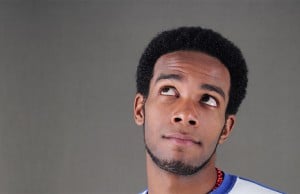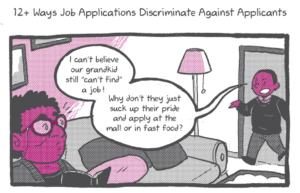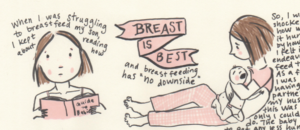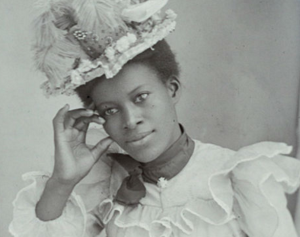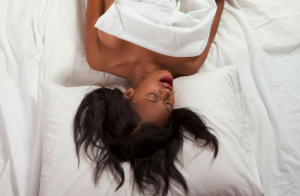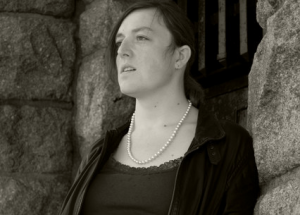
Source: Autostraddle
(Content Warning: Transphobic slurs)
Originally published on Autostraddle and republished here with their permission.
A month or two after I started living full time out as woman, one of my friends suggested I talk to an acquaintance of his, an older trans woman who had been out for years.
My friend thought his acquaintance might be able to give me some tips on surviving as a trans woman. I was thrilled. Here, I thought, was someone who had the answers.
Surely she would be able to point me in the right direction.
We had arranged to meet in a coffee shop. In my excitement, I arrived an hour early. It was going to be awesome.
What actually happened was that she showed up and asked why I wasn’t dressed like a woman. I was wearing skinny jeans, a studded belt, and an ironic t-shirt. I liked how I looked. I looked, in my opinion, like a queer woman in her mid-twenties on her day off, which, shockingly, I was.
But no, I was informed, I wasn’t being a woman right.
She was neither the first nor the last person to inform me that I’m doing it wrong.
There was a woman I met soon after moving back up to Boston in 2011. She had transitioned in her teens, and most folks wouldn’t know she was trans unless she wanted to tell them. She had a real heart for women who were just starting transition, but she had expectations for those people.
She couldn’t stand “bricks.” She explained that bricks were women who looked “like a man in a dress.” A cinderblock was even worse. A trans guy who was too femme was feathery.
I’ve been told that if I’d only start pitching my voice up, or stop wearing pants, or start wearing makeup, I could totally pass, that no one would have to know the shameful secret that I’m a trans person.
There’s another side, too.
In college, I asked the instructor of a Women’s Studies course I took if she could recommend any reading on trans issues. She suggested Sheila Jeffreys’ 2005 book Beauty and Misogyny, which contains a delightful chapter in which Jeffreys uses pornography depicting young trans women of color to explain why there’s no such thing as trans and how trans women (no mention of trans men or non-binary folks for some reason) are actually evil, essentially pornographic simulacra reinforcing harmful gender tropes.
It’s a great double bind.
If you present in a traditionally feminine way, you’re just being a misogynistic parody of a woman, and if you fail to present in a traditionally feminine way, well ha! There’s the proof that you’re not really a woman right there.
And even if you are “really a woman,” that might not be enough.
At a Christmas party last December, a Smith alumna defended Smith’s decision not to accept trans feminine students by explaining that even if trans women were women, they had still been socialized as boys and men, and that Smith, as a safe space for women and trans men, had a right to defend their students from such people, from the inexorcizable specter of their privilege.
I know women who identify as “heterosexual with a transgender history.” They’re trying so hard to get away.
But you know what’s worse than being somebody’s idea of a bad tr*nny? Being somebody’s idea of a good tr*nny, an acceptable tr*nny.
Last fall, I was at an event in a room full of professional acquaintances. A musician who I’ve done some good work with came over to talk to me. This guy is a kind, thoughtful man who I trust. I’ve known him for about two years.
“Vivian,” he said, “it’s so nice to have you here. You always seem to happy and relaxed, and you’re always so open about being trans.”
At this point I’m smiling, enjoying a nice compliment. Then the horror began.
“All the other trans people I’ve known are always so stressed out and unhappy, and are just so difficult. You do an amazing job of making people comfortable.”
And by then I was ready to leap on him to get him to be quiet. The only other trans person he knew, as far as I was aware, was standing a few yards away. I don’t know if she heard that or not, but I really hope not.
That’s not a unique example.
I’ve had a lesbian in her 60s tell me that I was the first trans woman who ever got along with, that I’m cool and queer instead of “uncomfortably trying too hard to be a straight woman.”
Here’s the thing: People fucking despise trans women. Often the nicest thing they can thing of to say to trans woman is “Gosh, you are so little like a trans woman!” Being trans is something to avoid, to exclude, to escape, at worst to nobly bare up under.
But I’m done with it.
You can be trans or cis. You can be super femme, you can be ultra butch. You can be straight or queer. You can have people saying you’re a transcendent beauty who just stepped off a Renaissance canvas, you can have people saying you’re a stomach turning monster. You can be a light in the world who every person you meet loves and devotes themselves to, you can be an awkward storm cloud who drives everyone away.
I don’t care. Sun shines and rain falls on the just and unjust alike. I don’t want to know who the Real Good Ones and the Real Bad Ones are. We’re all people. We all deserve to be treated as valued members of humanity. That’s all.
[do_widget id=”text-101″]
Vivian Taylor is an Episcopalian writer, activist, avid Sung Compline promoter, and proud (if occasionally troubled) North Carolinian currently living in Boston, MA. She served in the War in Iraq from 2009-2010 and has run several statewide LGBTQ rights campaigns in places like North Carolina, Michigan, and others. She writes about being a peacenik veteran, an Anglican Nihilist, and the paradox of our coexistent onesness with being and solitude.
Search our 3000+ articles!
Read our articles about:
Our online racial justice training
Used by hundreds of universities, non-profits, and businesses.
Click to learn more
Most Read Articles
- « Previous
- 1
- …
- 30
- 31
- 32







